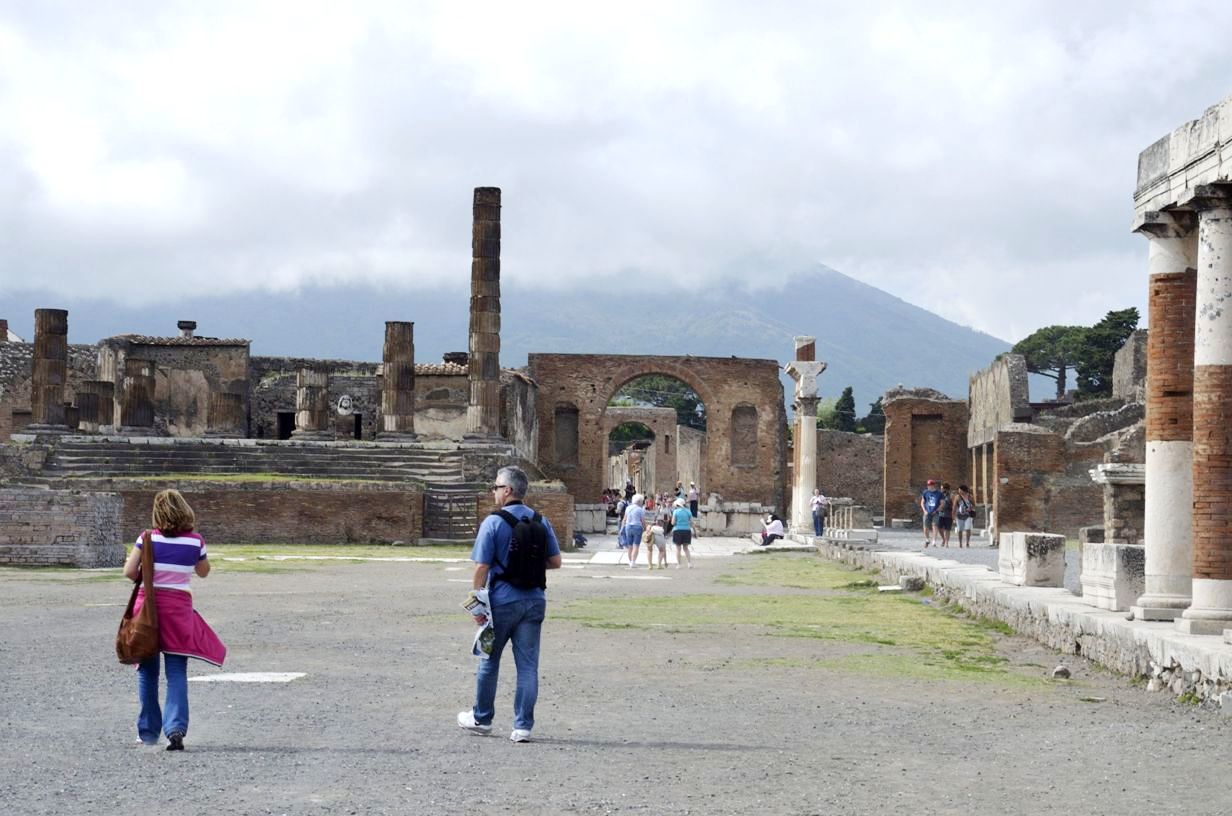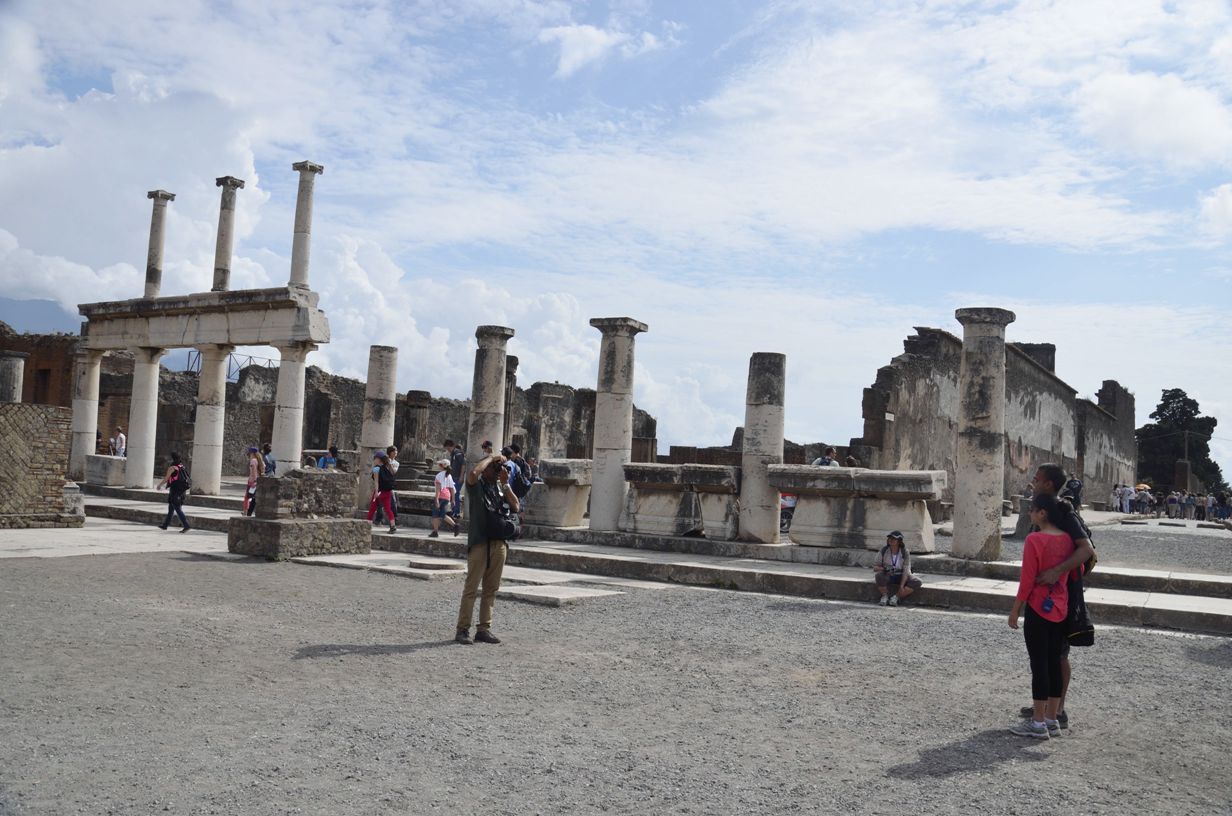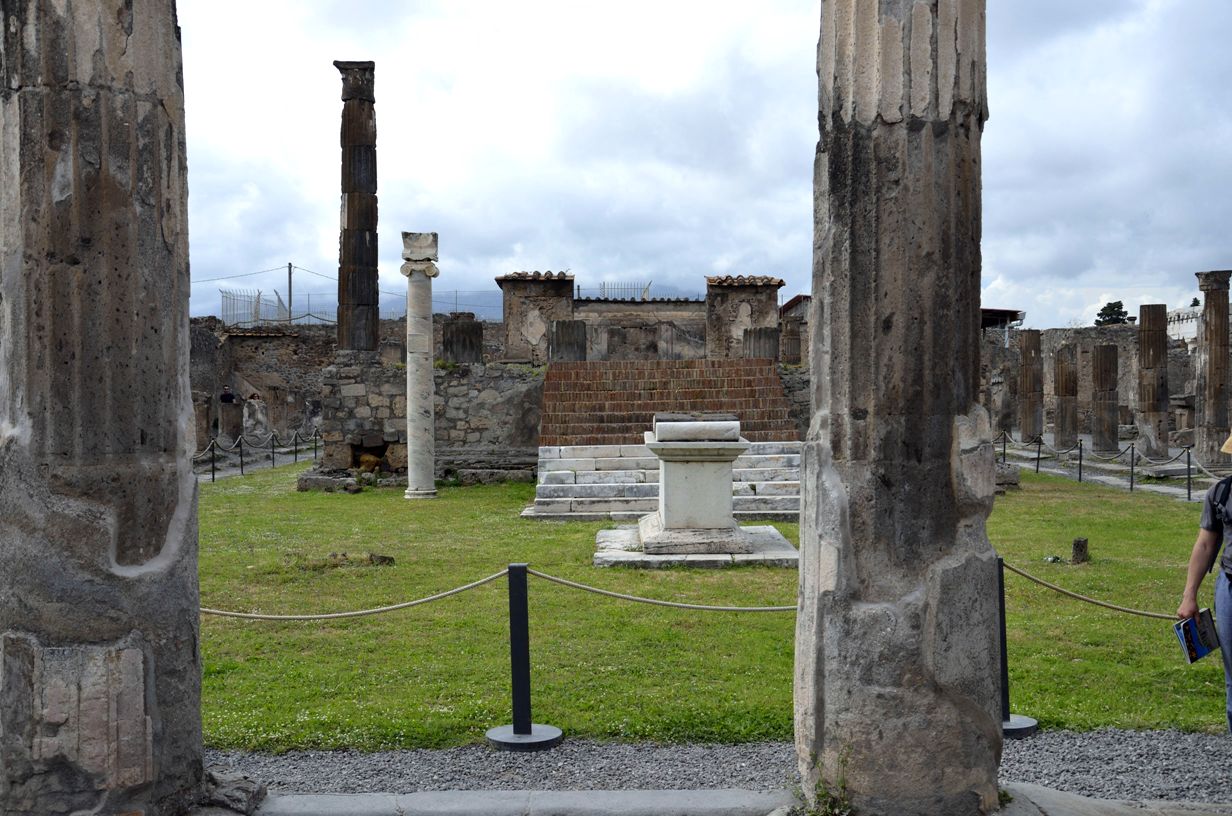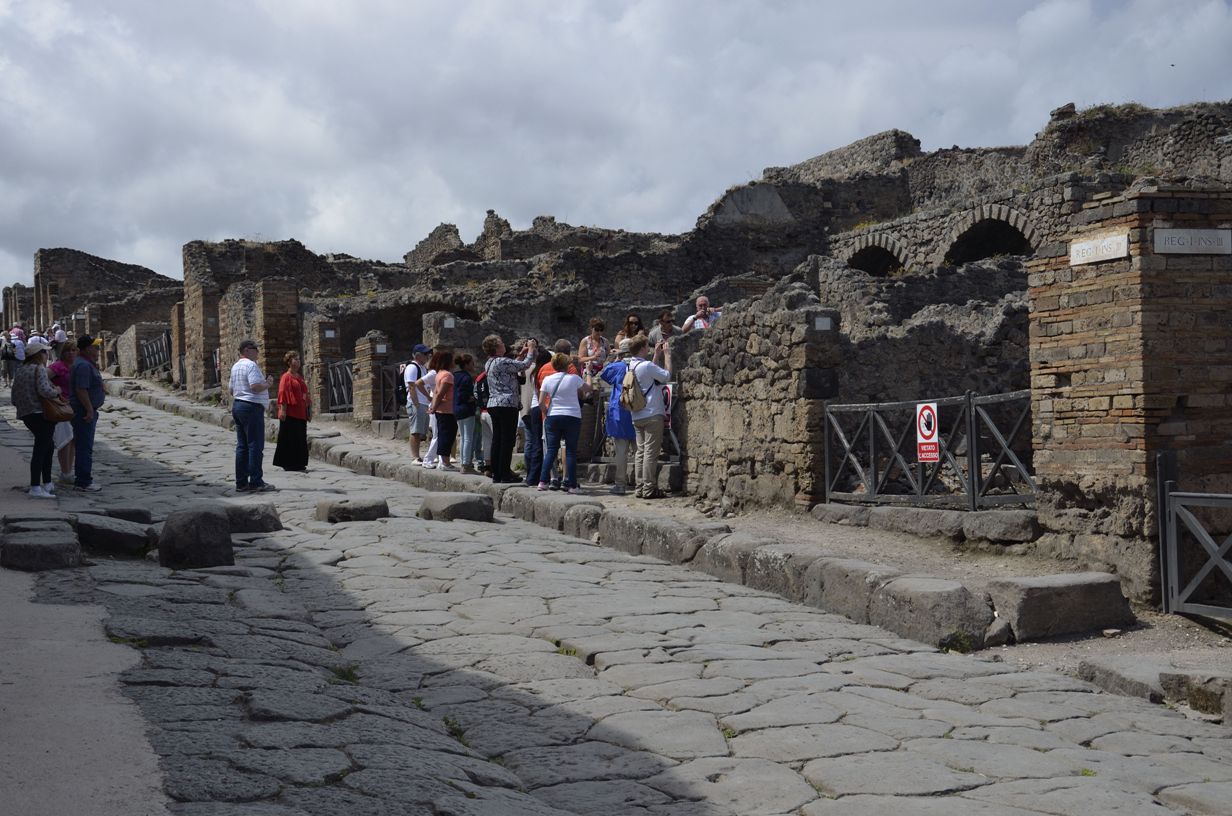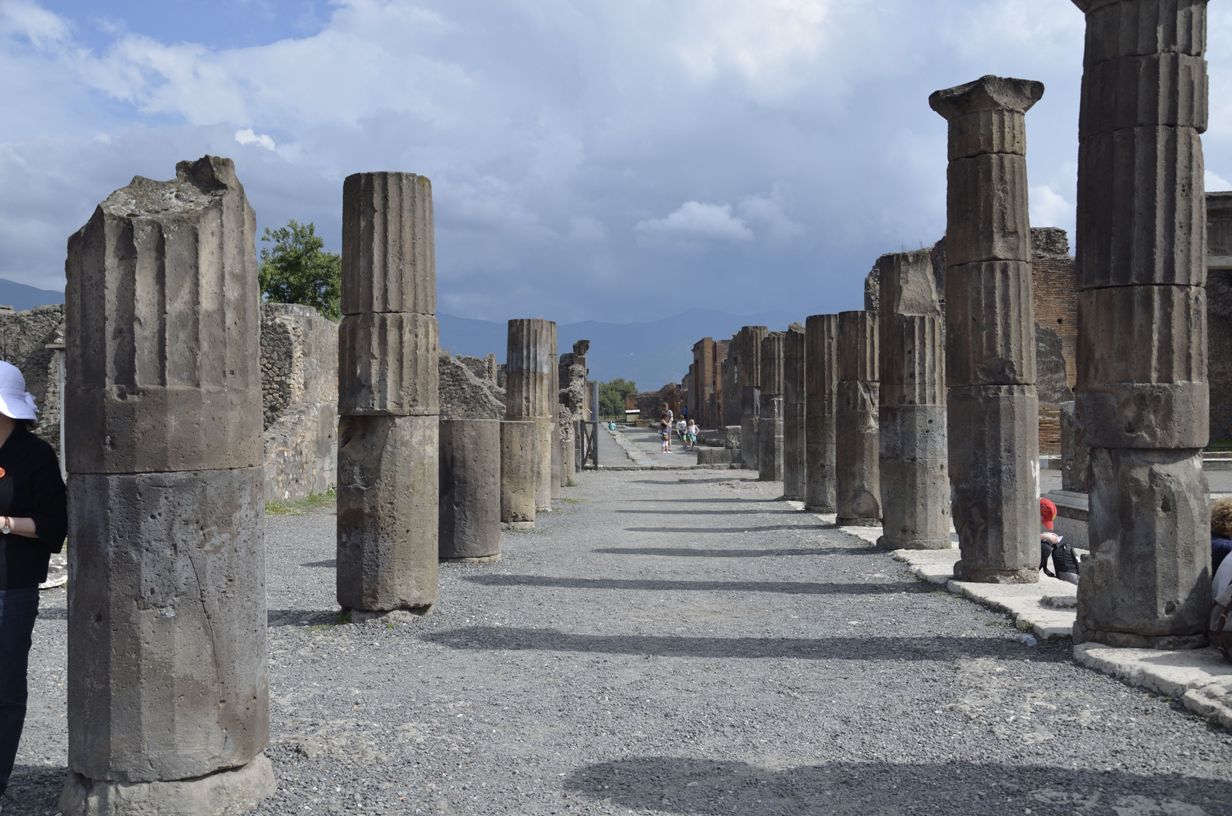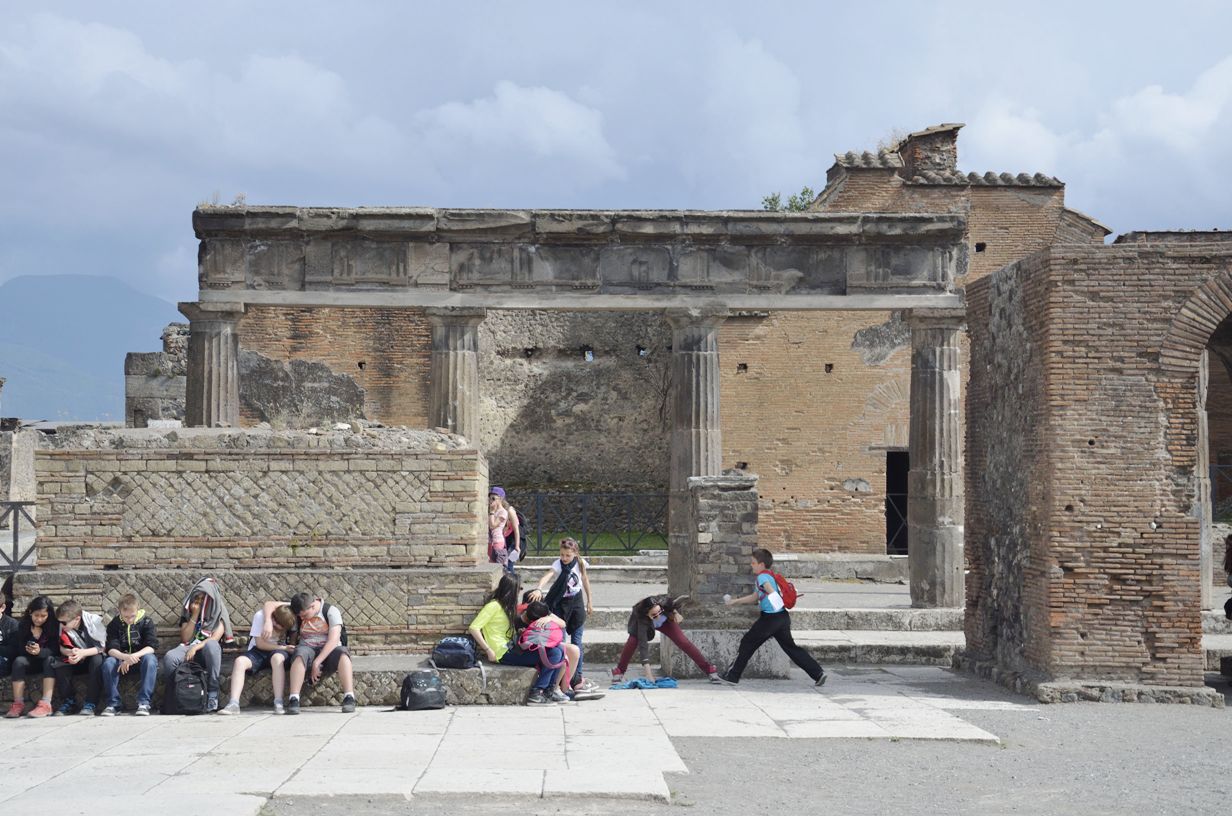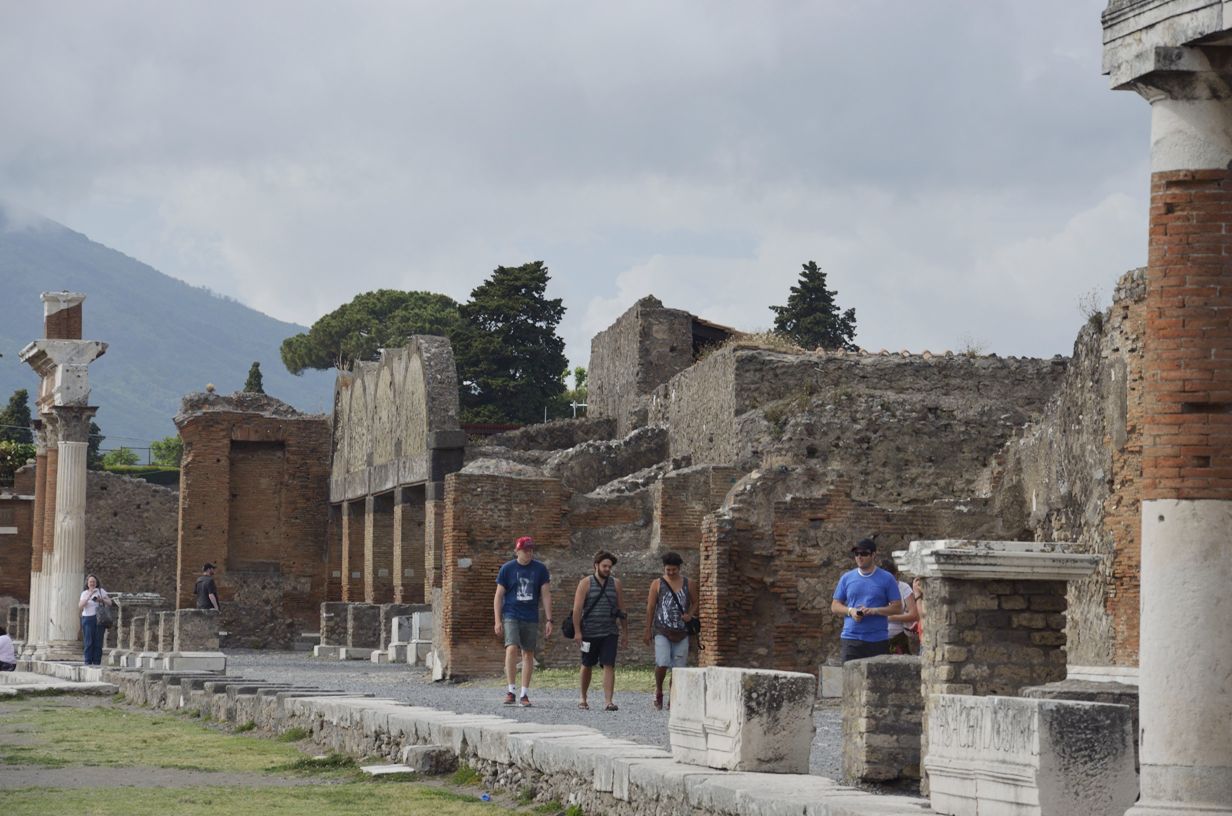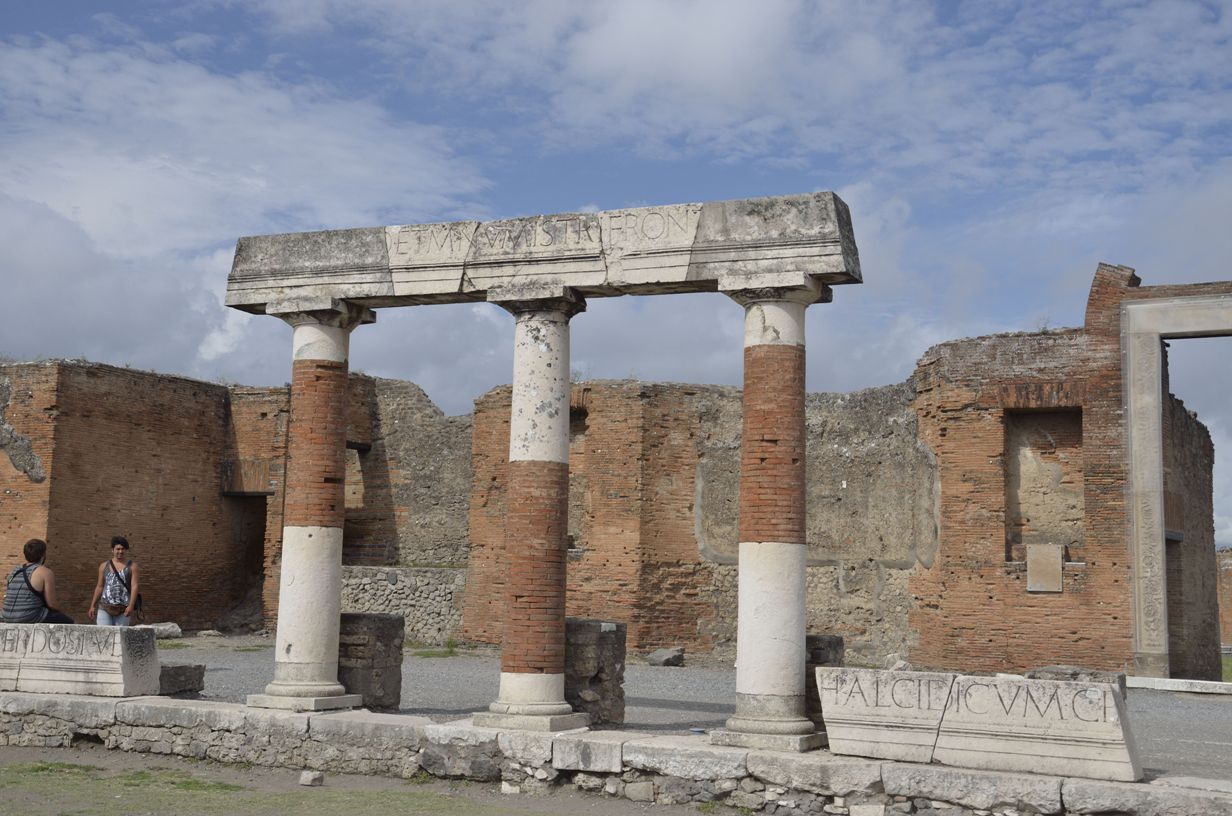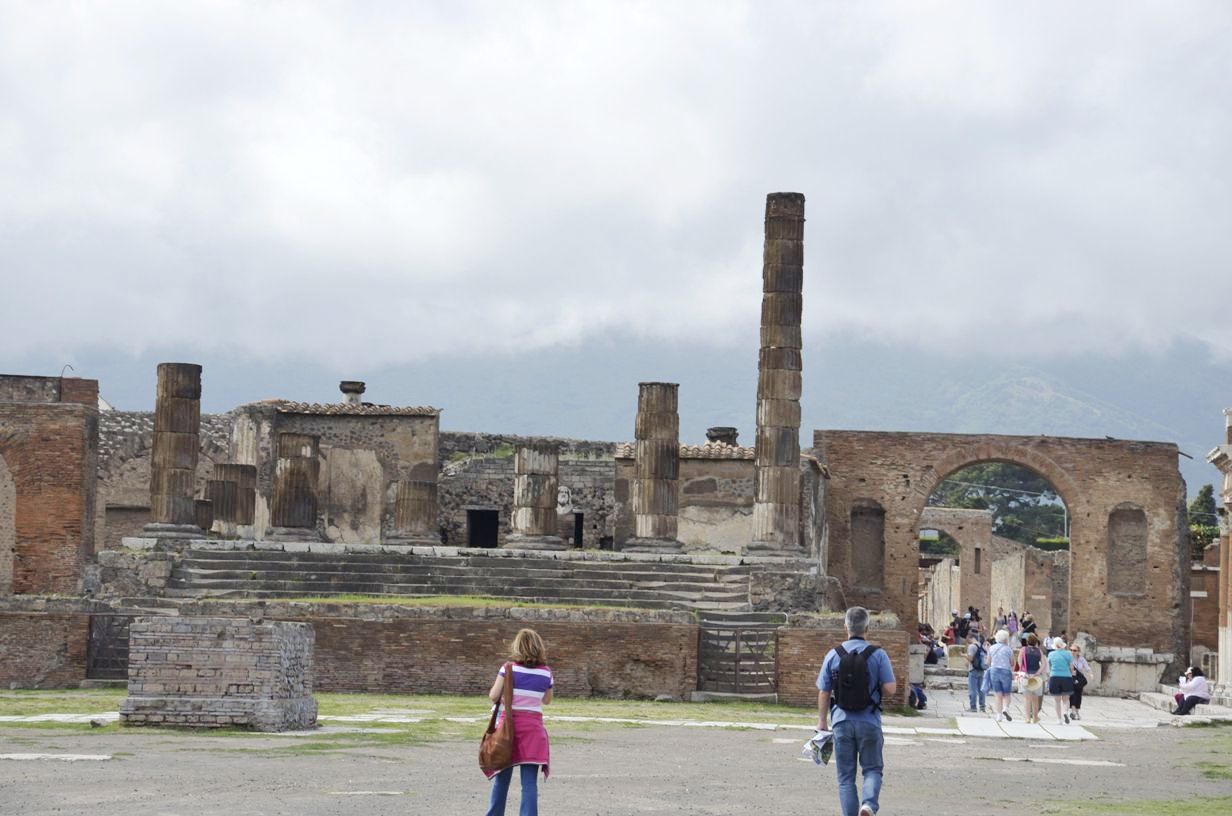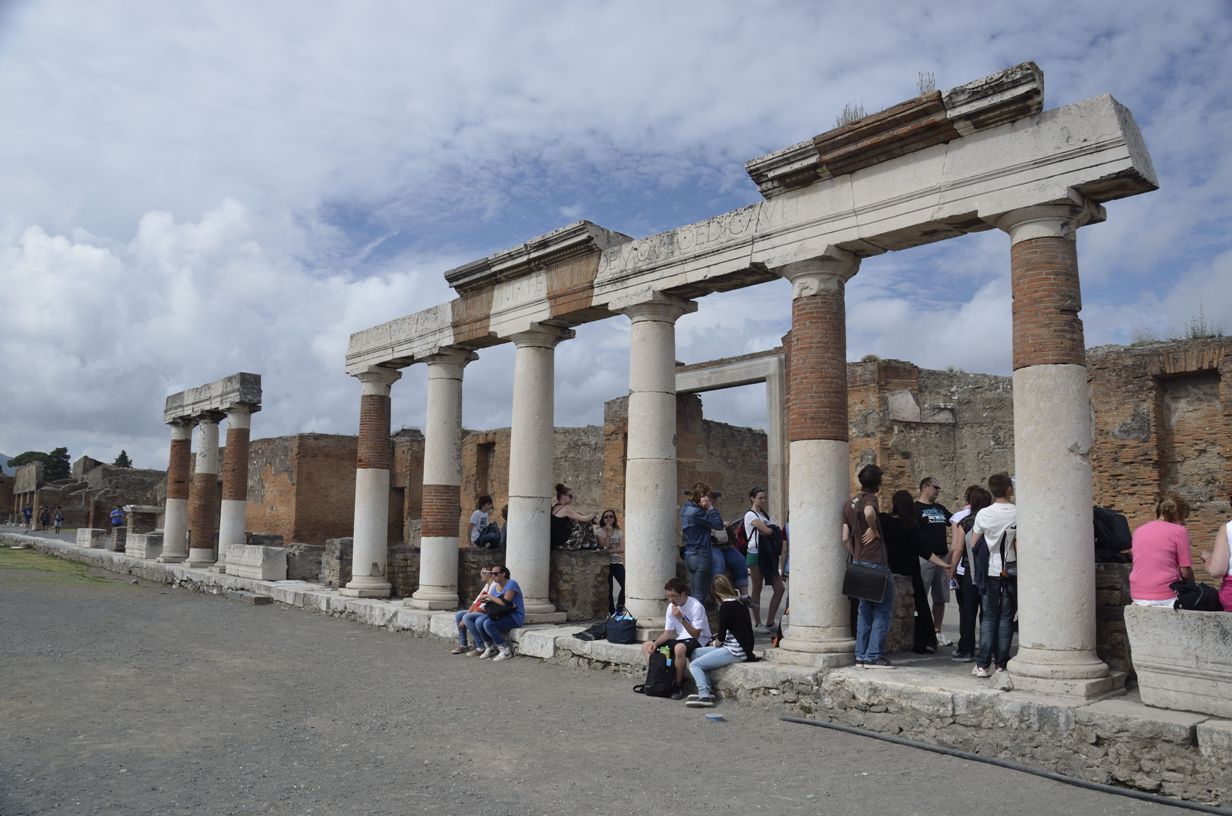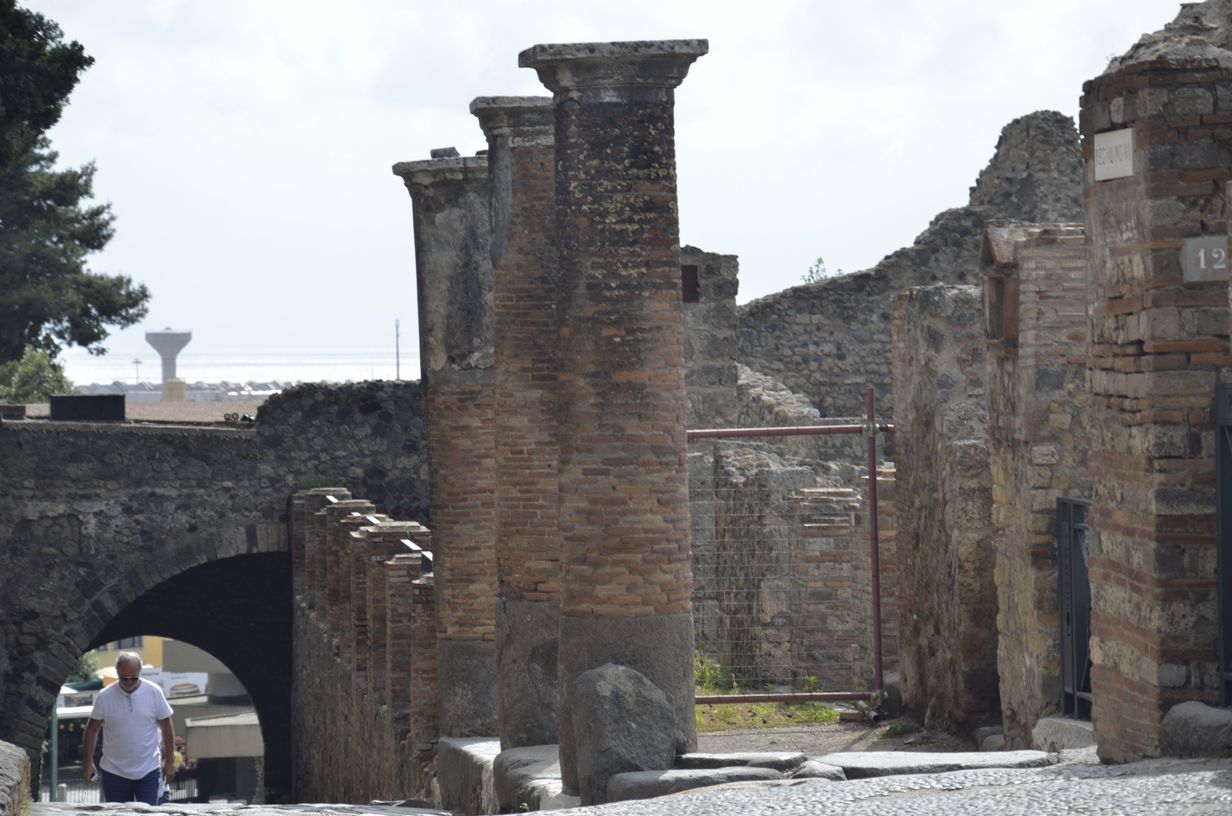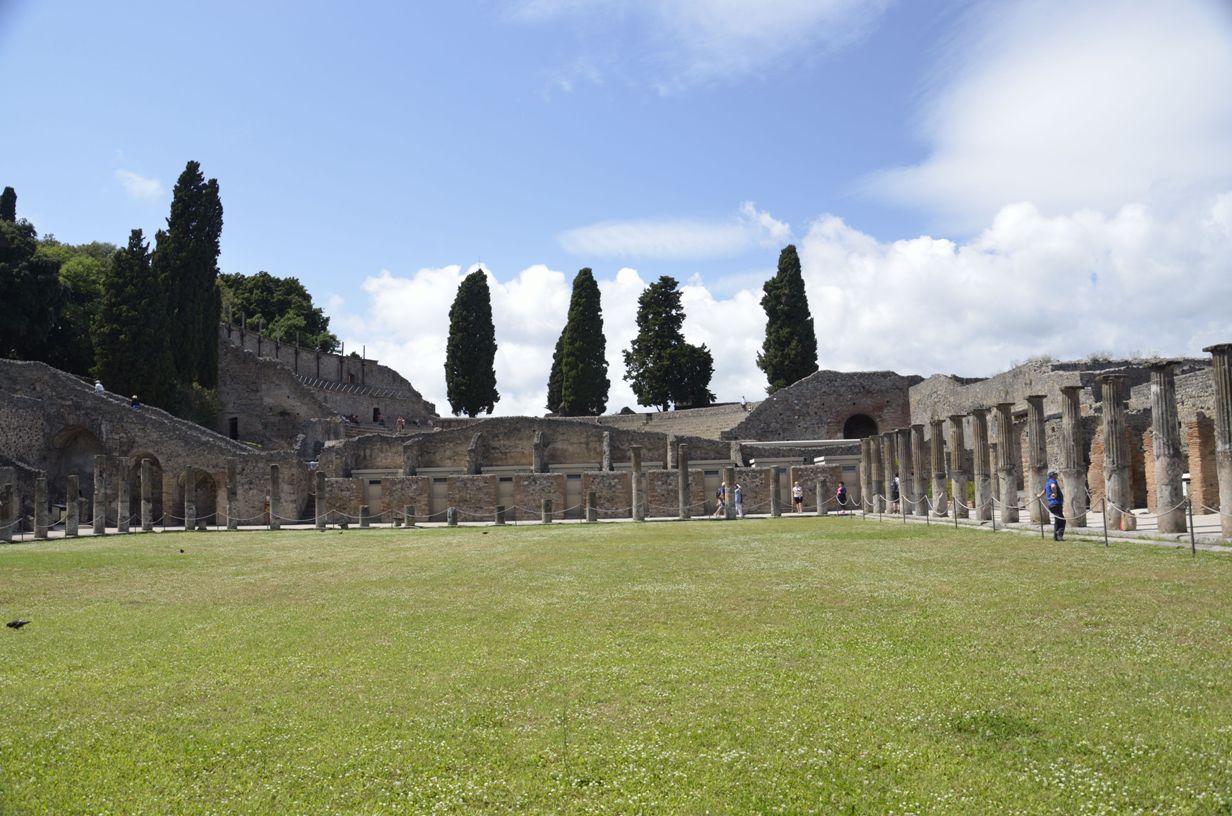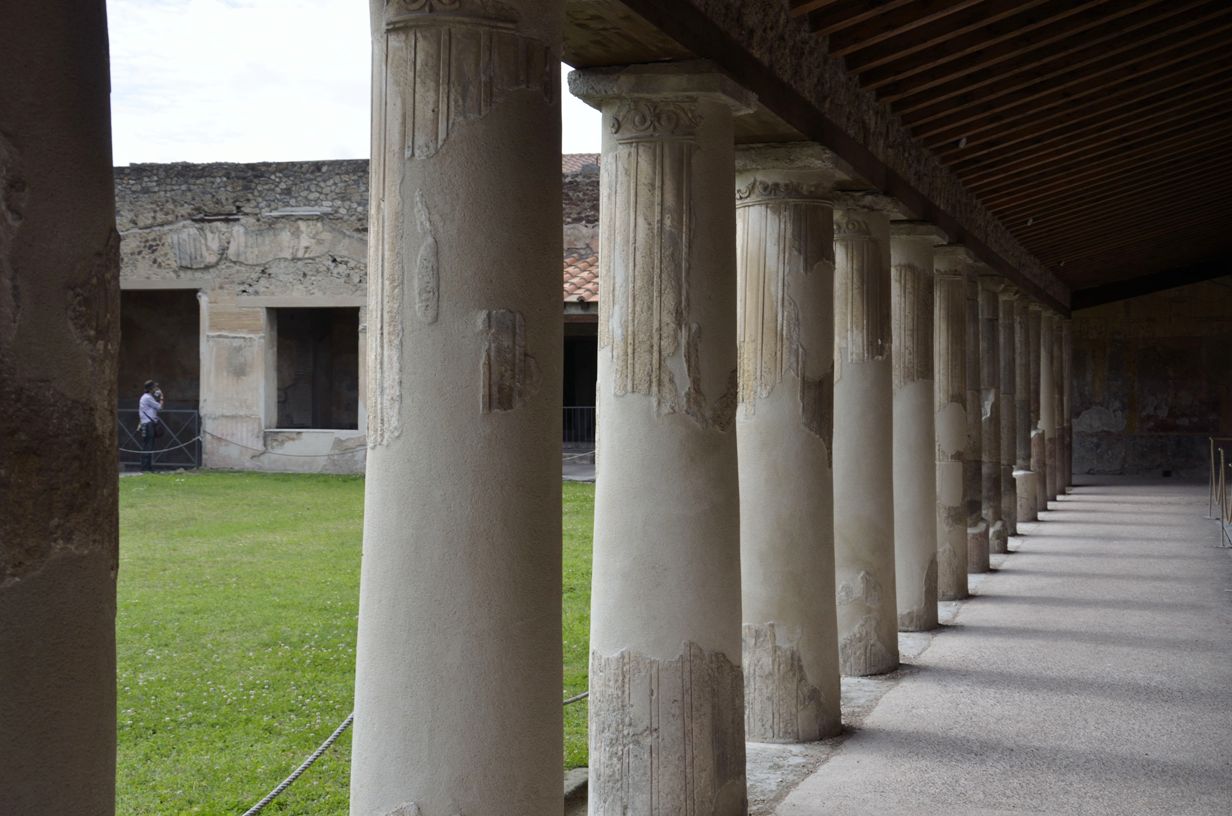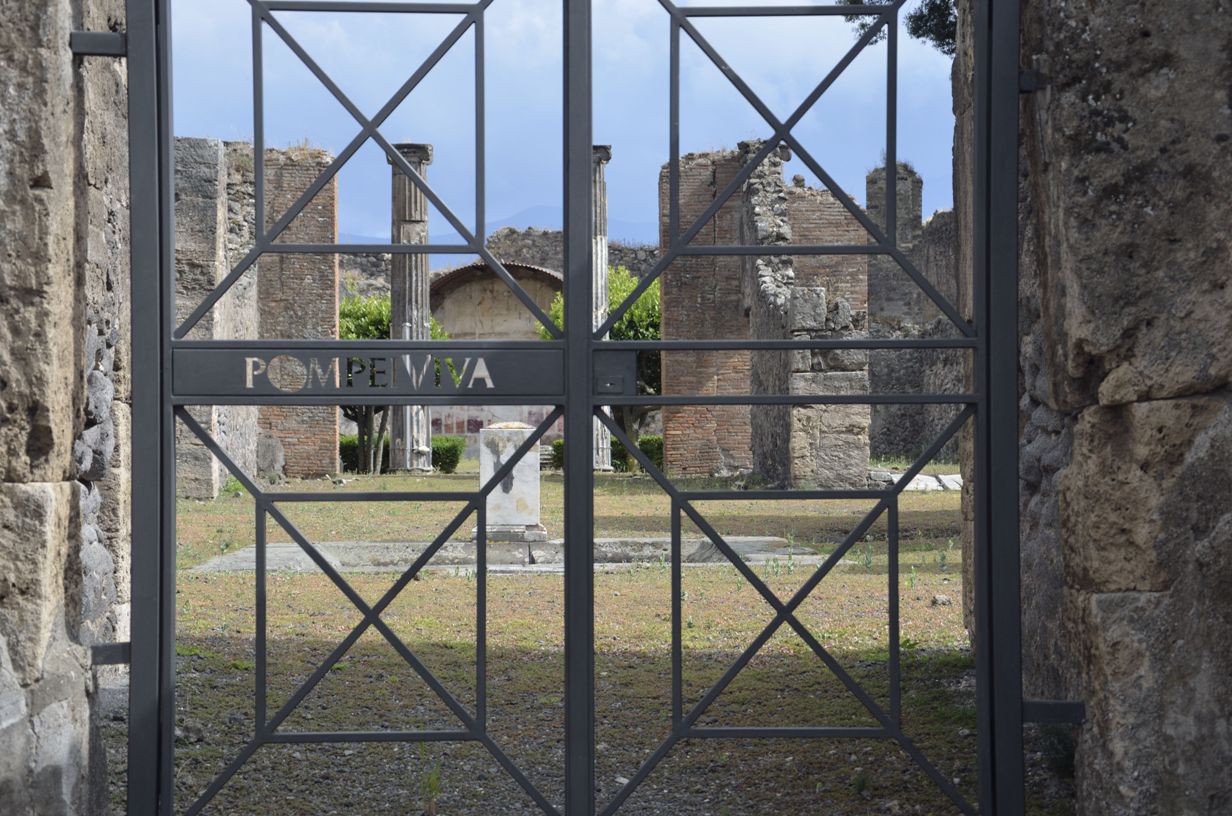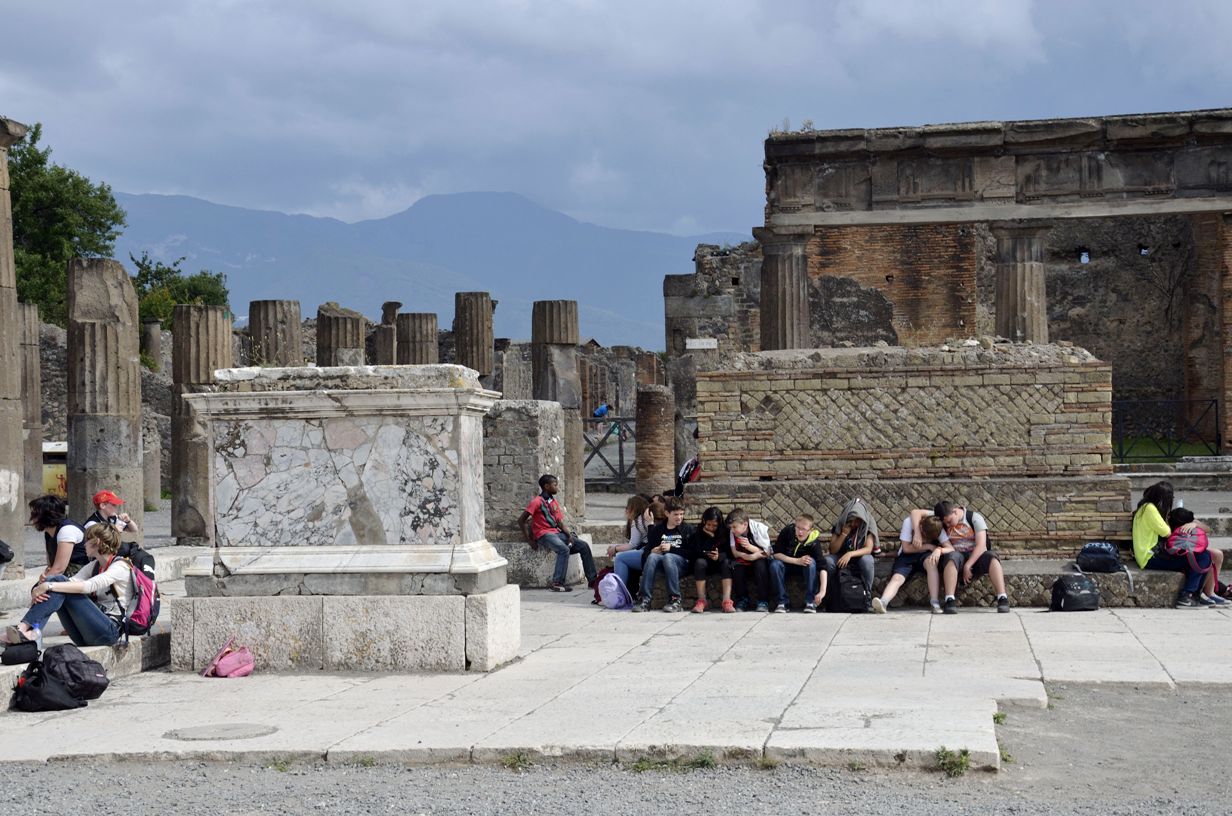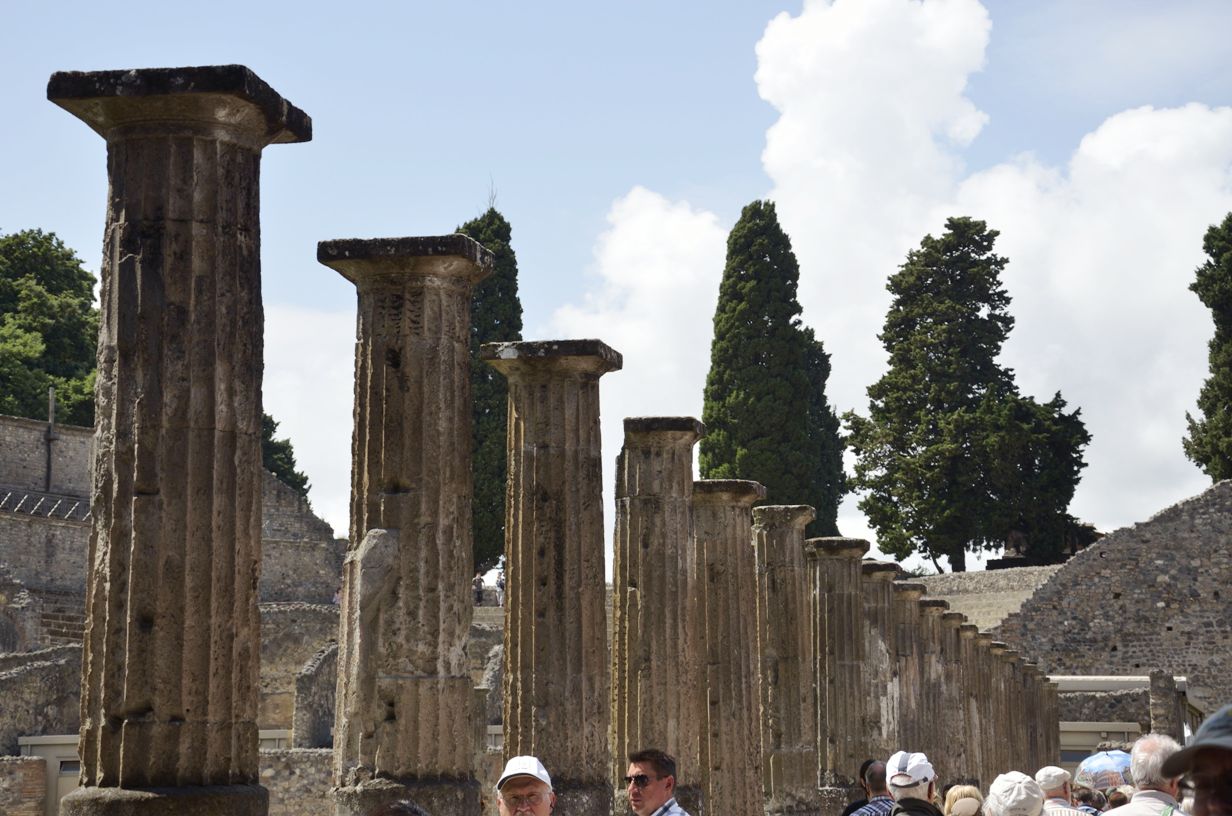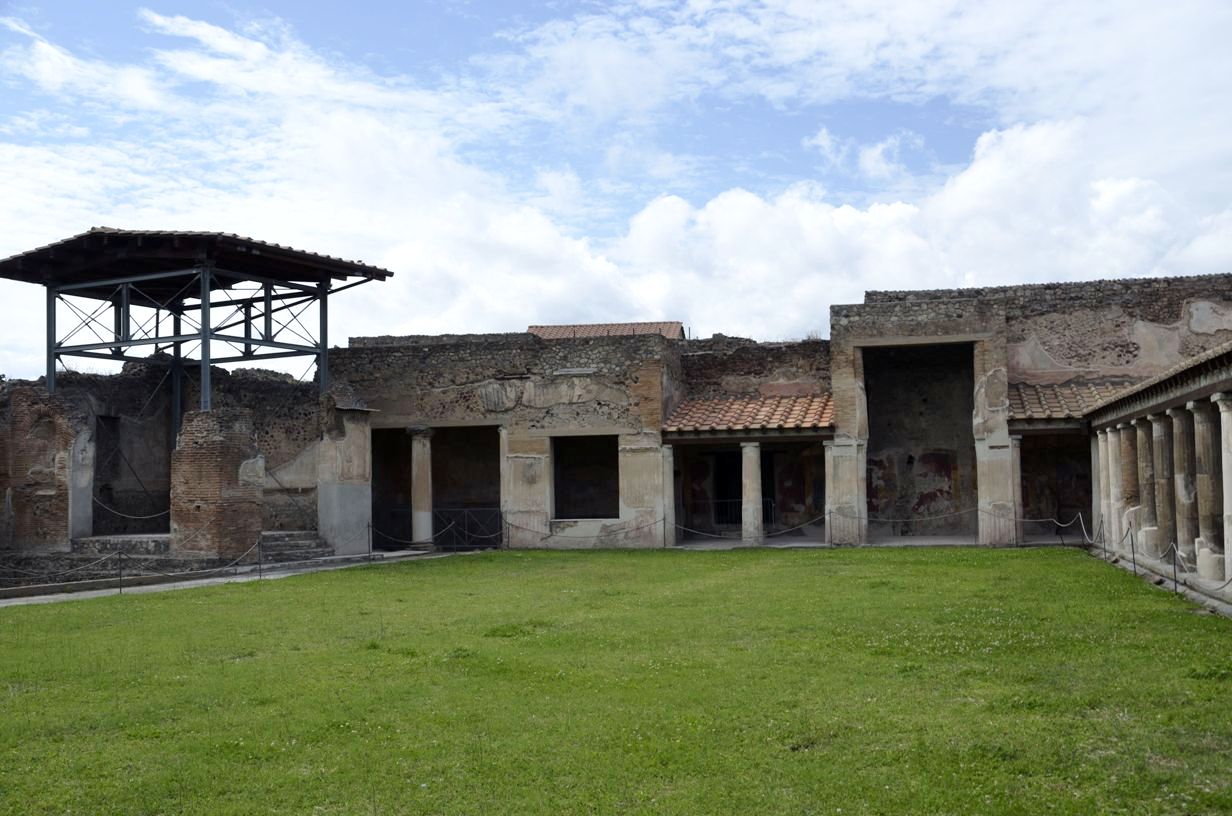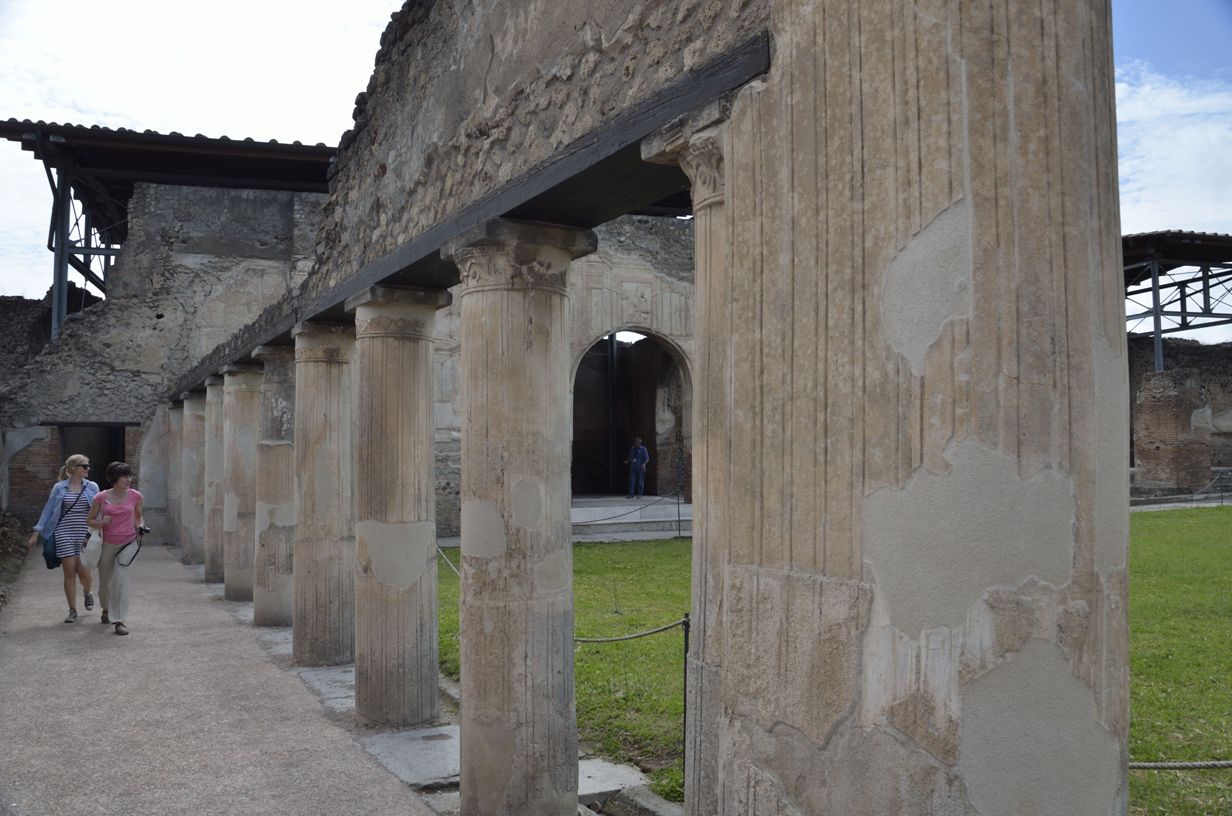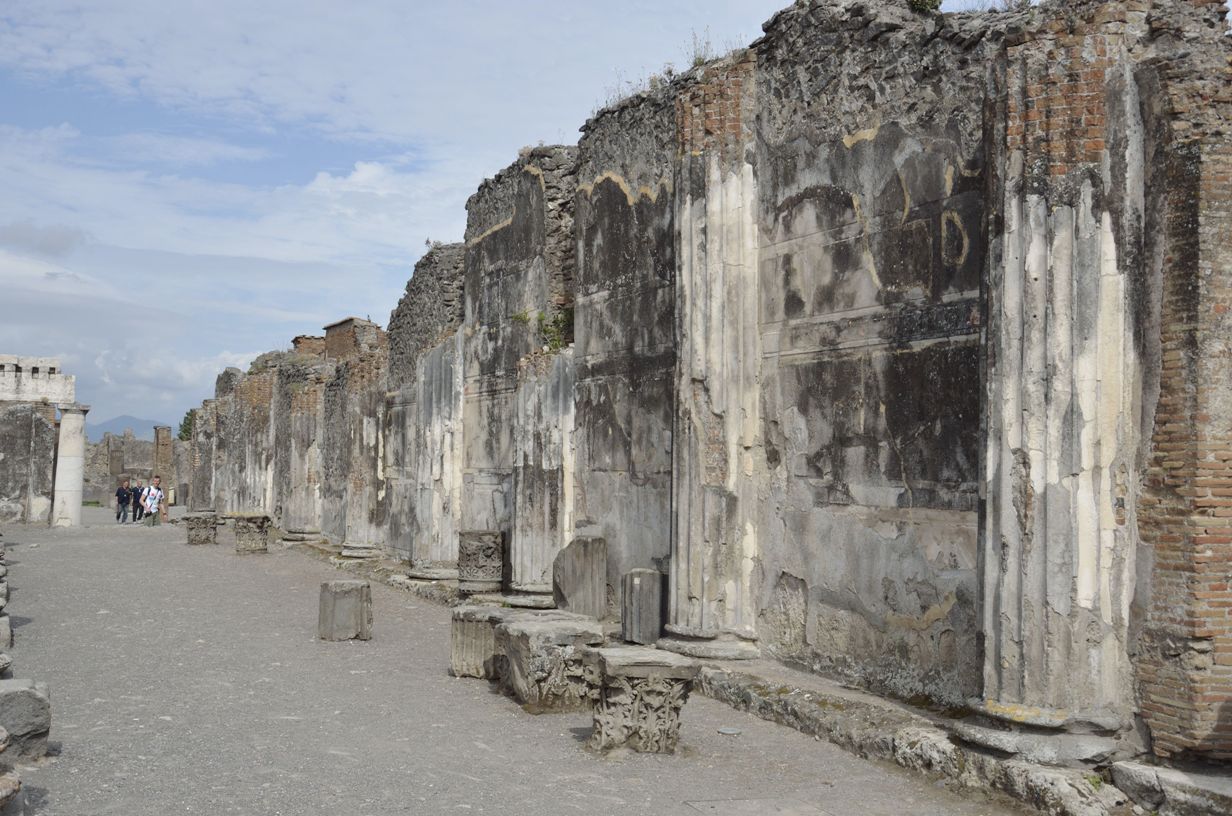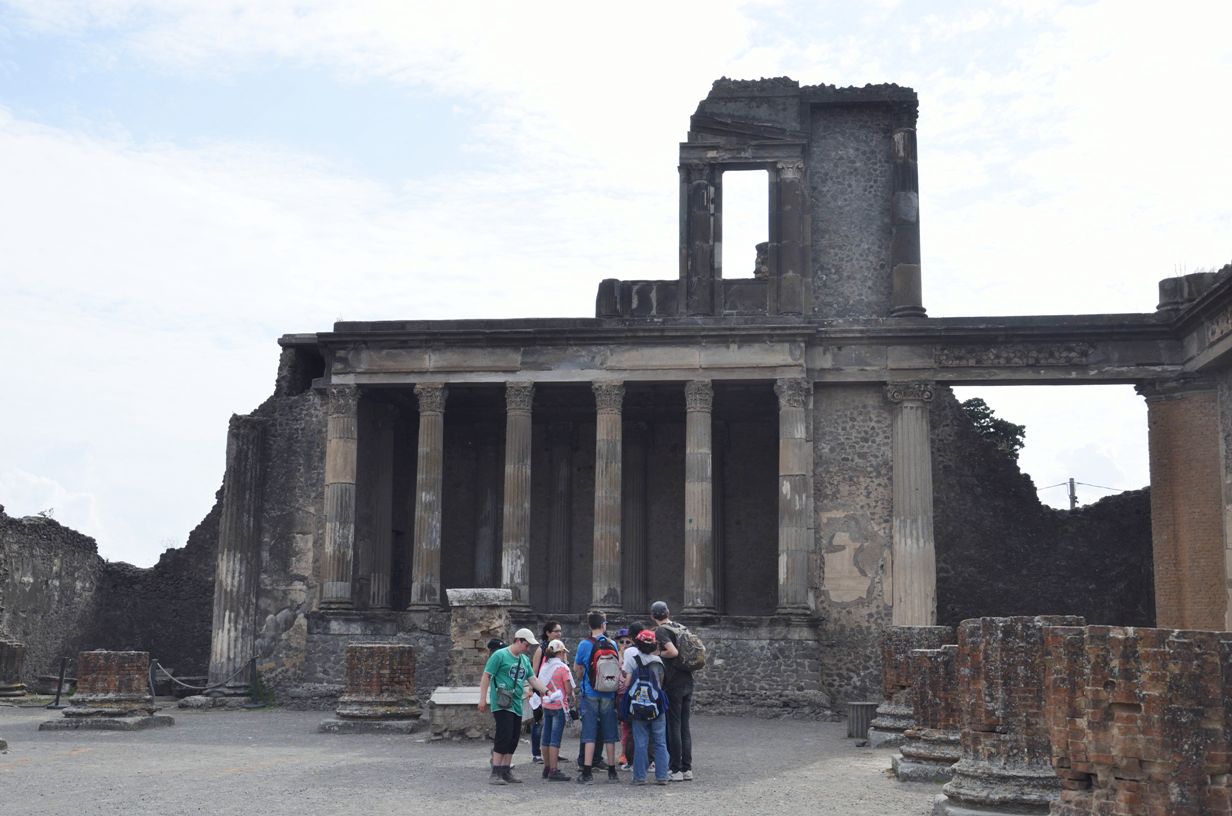
Temple of Jupiter
Public Gymnasium
Gym Hallway
Temple
Monuments
Public Spa
Walkway to Spa
Perimeter Protective Wall
Pompeii
Location: 40° 49' N, 14° 26' E Region: Campania Province: Naples Population: 0 Length/Width: 163 acres Area: 5 sq. miles (12 km2) Avg Temp: 40°F - 80°F Rainfall: 39.52 in Winter - 33 in. Summer - 6 in. Language: Neapolitan Money: Euro(EU) Commerce: Tourism History:Pompeii was an important port city on the West coast of Italy. It was built at the base of Mt. Vesuvius on ancient lava flows along the Eastern shore of the Bay of Naples.
After Rome took over the city in 80 b.c., they modernized it, introducing aquaducts, bath houses and numerous gravity driven water fountains that were used as signposts to facilitate navigation around the city.
Pompeii had an ampitheatre that seated 15,000, a large theatre with 5000 seats and a small theatre with 1500 seats. The wealthy lived in large houses, the middle-class stayed in rooms behind their shops or in a second story above them.On Aug 24, 79 a.d. the massive 9000 foot mountain exploded and blasted 700 degree pyroclastic winds outward at 1400 km/hr. Within 8 hours two thirds of the mountain was gone and Pompeii was buried under 15 feet of volcanic ash and pumice rock.
It happened so quickly and remained buried so long (1700 years) that the city is remarkably preserved -- except for most of the roofs which colapsed under the weight of the ash.
For centuries nobody knew that Pompeii was there until someone discovered the top of a column from the Temple of Venus protruding from the highest point of the site. Excavation began in the 1800s and continues today. A third of the site is still pending excavation. Only 4000 bodies have been found so far. It's theorized that many of the other residents (estimated to be 10,000 - 15,000) tried to escape to the sea but were washed away by the giant tsunami generated by the explosion. © Copyright 2008 Write Sounds Entertainment, Inc. All Rights Reserved.
